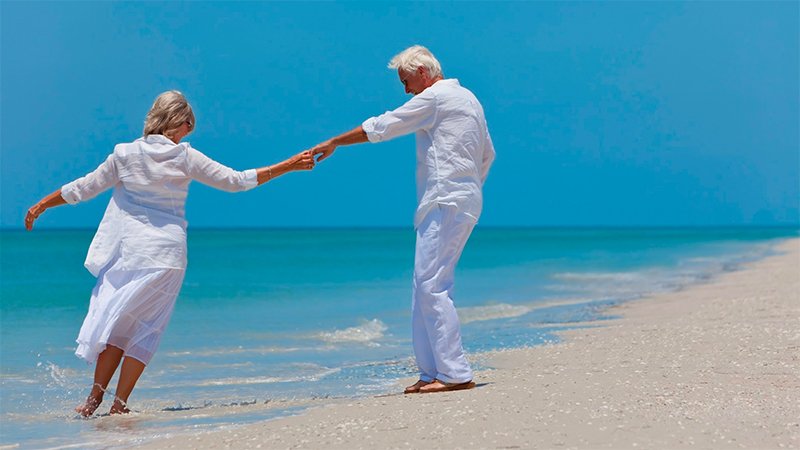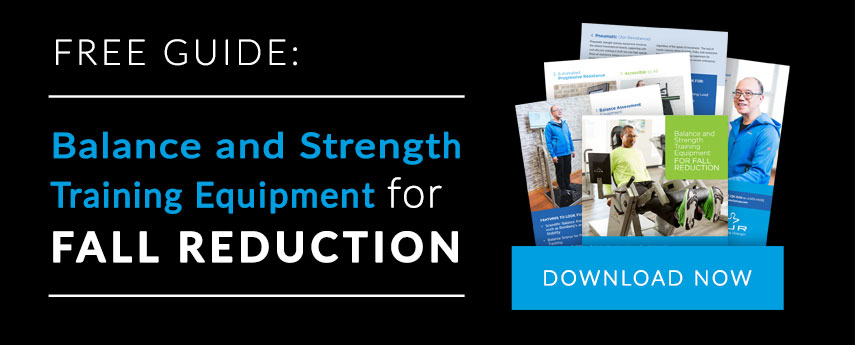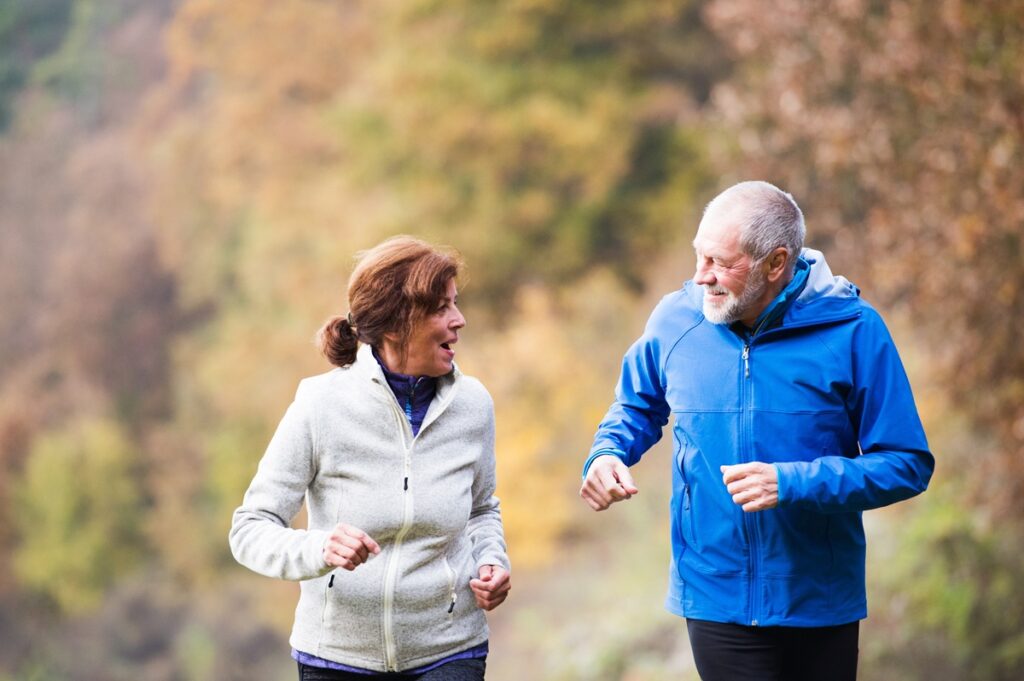5 Exercises to Improve Range of Motion
As we age, daily activities like standing up from a chair and getting in and out of bed can become increasingly difficult. Decreases in muscle mass, muscle strength, flexibility, and lubrication of our joints are a natural part of aging and generally the cause behind these limitations.
In fact, without intervention, most people will lose 40% or more of their muscle mass as they age. One of the contributing factors to muscle loss is the fact that many older adults stop participating in many everyday activities that require muscle power. This lack of use produces a wasting effect on the muscles and decreases the available range of motion (ROM).
Range of motion is simply the term used to describe the movement available within a joint, or the range through which a joint can move. The combination of muscle loss and decreased range of motion can lead to pain and mobility problems for older adults.
So, what can be done to stop these declines? The answer, of course, has to do with how much we move. But, it's also about being more deliberate about the types of movement we incorporate into our daily routines.
How Aging Affects Our Range of Motion
As we already discussed, without intervention, all adults experience muscle loss as we age. This is called Sarcopenia and it’s the result of changes in cellular components and muscle fibers, as well as inactivity.
Even without realizing it, sarcopenia can cause us to make changes in the way we move that results in decreased range of motion. For example, over time, an older adult may unconsciously begin to adjust their posture, curving forward in response to a loss of upper body and core muscle strength. The cumulative effect of these changes has an impact on balance, coordination, and the ability to move and walk.
Compounding changes in muscle mass and movement, many older adults experience diminished nerve conduction and the ability to correctly recognize the position of their body in space. These changes can not only affect the way a person moves. Often they cause older adults to want to move less.
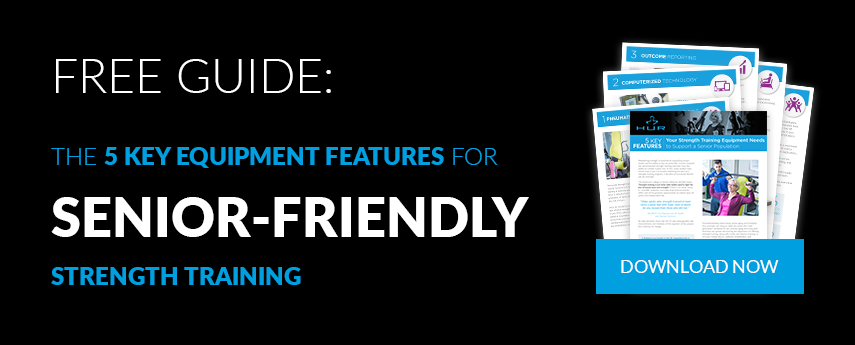
Often the fear of falling in itself is enough to prevent some older adults from participating in certain activities. And, the less a person moves their joints, the more likely they are to lose range of motion.
Taken together, it’s easy to see how these changes can compound and make it increasingly difficult to maintain balance and full functionality during normal daily movements such as walking, reaching, and lifting items.
It’s a vicious cycle.
But that doesn’t mean we must accept limited range of motion as our fate. Even for seniors who are recovering from injuries, or who are restricted to a wheelchair, there are a lot of exercises that can help maintain flexibility and strength.
Why Range of Motion Exercises are Important for Older Adults
Regular exercise comes with a host of benefits for everyone at every age. Exercise energizes, strengthens muscles and bones, and promotes cognitive and psychological health.
In general, any movement is better than none. But, as we age, it becomes more important to incorporate exercises into our normal fitness routine that are intended to support and maintain a healthy range of motion. Doing so supports long term independence, increases coordination, and helps reduce joint stiffness.
Range of motion exercises also help keep the joints mobile and flexible. This is just as important for active seniors as it is for those living somewhat live sedentary lifestyles. As we age, we become more prone to medical conditions like osteoporosis or arthritis, causing our joints to stiffen and become inflamed. These conditions can not only cause pain and discomfort, they can limit our flexibility, mobility, and threaten our ability to accomplish the daily tasks that support independence.
According to the Centers for Disease Control and Prevention, 61 percent of adults aged 65 and older are limited in their ability to perform basic actions, like picking something up off the floor or reaching to grab a cereal box from the pantry. Even for those who engage in regular physical exercise, these basic movements are not the kind of thing most people do in the gym. And yet, the older we get, the more important it becomes to engage in basic exercises that mimic these types of functional movements.
When we’re young, we don’t think about the fact that one day simply bending down to tie our shoes might become not only difficult, but dangerous. And yet, every single daily functional movement required for independent living must be maintained. Without functional exercises designed to support a healthy range of motion and condition our bodies for daily life, we become susceptible to joint dysfunction, degenerative joint disease, and other injuries that arise from lack of use.
Training the movements that support daily life
The exercises below are a starting point for incorporating functional range-of-motion exercises into daily life. They can be adjusted for most ability levels and performed nearly anywhere.
Exercises designed help maintain mobility and flexibility can not only help older adults manage joint problems, they can improve balance and reduce the risk of falling. For most healthy, active adults, range of motion exercises, when combined with flexibility and strength training, can maintain or even increase the range of motion in joints.
Most exercises intended to support range of motion do not build muscle strength or promote muscle growth. Rather, they are designed to keep the joints, tendons, ligaments, and muscles flexible, supple and lubricated. For this reason, it’s highly recommended that range of motion exercises be included as one part of a holistic fitness plan that includes strength training, flexibility and balance exercises, and cardio exercise.
Exercises that support a healthy range of motion for active older adults
One thing that’s important to understand is that everyone has a different “normal” range of motion. Knowing what “normal” means for you or, if you’re a fitness or wellness professional, for your clients, is vital to prevent extending or hyper-extending joint movements too far, causing pain and risking injury.
Understanding the difference between outward rotation (external) and inward rotation (internal) is important for performing exercises.
1. Upper Body Clam Shell
This exercise promotes scapular retraction (the ability to pull your shoulder blades towards your spine) and will help increase shoulder flexibility and stability.
- Sit in a chair in an upright position with your feet flat on the floor. Or, stand with your feet shoulder width apart on a hard, stable surface.
- Form a goalpost with your arms: bend arms at a 90-degree angle with the upper arms parallel to the floor.
- Bring your forearms together in front of your face.
- Return your arms to starting position (squeezing your shoulder blades together).
To make this exercise slightly more challenging, hold weights in your hands.
2. Semi-Sits
Also known as chair squats, semi-sits are a safe way to build strength. The bending and stretching of your knees strengthen knee muscles and allows more oxygen and blood to flow around the joints, which helps keep them supple and strong.
- Stand in front of a chair with your feet hip-width apart and the muscles of the core, tight and engaged.
- Slowly lower your body to the chair and bend your knees like you’re going to sit.
- Touch the chair seat lightly, then return to a standing position.
Make sure to keep your chest and head up and don’t let your knees go past your toes. Push up through your heels.
3. Seated Abdominal Press
Seated abdominal exercises allow you to strengthen your core. Maintaining your core strength is key to maintaining stability, and thus, your overall mobility.
- Start by sitting on your chair in an upright position with your feet flat on the floor
- Place your hands on your knees with elbows locked and press your palms into your knees while keeping your core muscles tight and engaged.
- Hold 3-5 seconds
- Repeat
4. Side Bends
This is another great core exercise you can do anywhere.
- Sit on a chair with your feet flat on the floor
- Place one hand behind your head and the other arm outstretched to one side
- Lean over to the side as if reaching toward the floor
- Contract your oblique abdominal muscles and return to the starting position
Don’t allow your chest to fall forward and try to keep both feet flat on the floor.
5. Low-back Rotation Stretch
Your spine is a source of strength for many activities, and the lower lumbar region of the spine is the powerhouse of all movement. The benefits of stretching your lower back on a regular basis include improving your range of motion, reducing back pain, and increasing the flexibility of tendons, ligaments, and muscles. Stretching exercises that focus on the lower back help to relieve tension and morning stiffness.
- Start by sitting on your chair in an upright position with your feet flat on the floor
- Twist your upper body so your shoulders rotate to your left side (use the chair or your leg for support if you need to get a deeper stretch)
- Hold for 20-30 seconds
- Return to starting position
- Repeat on the right side
